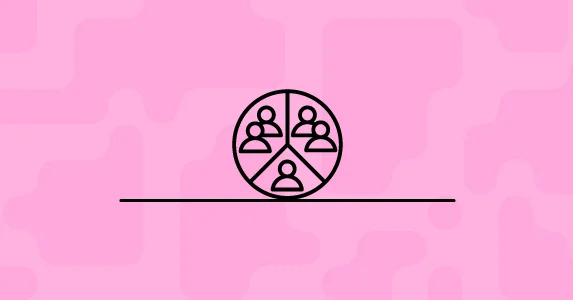Customer engagement guide — that’s where it all begins if you’re looking to turn casual browsers into loyal brand advocates. But knowing what engagement is isn’t enough. The real magic lies in how you do it.
In today’s experience-first world, your customers are not comparing you to just your competitors—they’re comparing you to the last great digital experience they had. That’s why brands need to stop guessing and start doing what works.
In this blog, I’ll walk you through 12 real-world customer engagement examples that go beyond surface-level tactics. From hyper-personalized emails to conversational WhatsApp nudges and immersive app experiences, these strategies not only drive attention—they drive results.
Let’s explore what’s working, why it works, and how you can apply it across your own customer lifecycle.
TL;DR
- 12 real-world customer engagement examples across industries and lifecycle stages.
- Strategies include loyalty programs, live chat, interactive content, and personalized messaging.
- Emphasis on omnichannel, tech-driven engagement—like push, email, and WhatsApp.
- Highlights how brands use automation and AI for 1:1 personalization at scale.
- Each tactic is backed by why it works—and how it drives conversions, retention, or loyalty.
What is Customer Engagement?
Customer engagement is about building relationships with your customers across different touchpoints to keep them interested in your brand and products.
These engagements not only make each interaction more consistent and meaningful but also give you valuable insights into what your customers really want and need. Mastering customer engagement is a must for any brand looking to stay ahead of the curve.
The statistics are clear: 84% of brands that prioritize enhancing the customer experience see a revenue bump of 4% to 8% over their competitors. The goal here is simple – deliver more than what your customers expect from your products or services. It’s all about crafting those “aha” moments that turn satisfaction into delight.
12 Customer Engagement Examples Brands Use to Win Big
Good customer engagement examples can inspire brands to discover new ideas. We’re confident that our selection will help you do the same. Let’s explore the examples below.
1. Offer Customers Welcome Rewards
91% of customers are more likely to shop with brands providing relevant offers. This is a great way to boost sales since this will further encourage customers to purchase products they already want to buy.
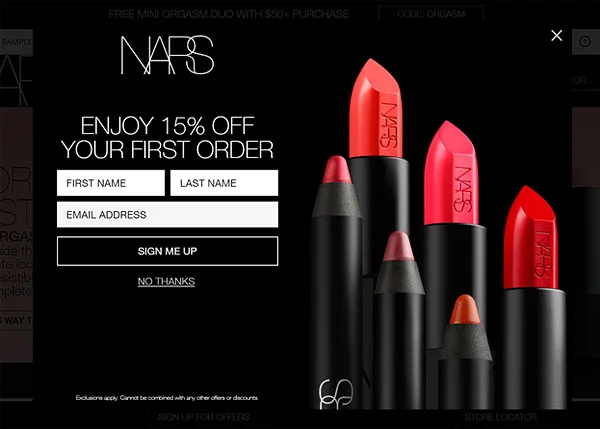
Nars Cosmetics offers personalized deals and coupons to first-time visitors. This also acts as the building block of their personalization strategy since they collect data from new subscribers. With customer data in hand, brands can engage with them by sending personalized recommendations, offers, and discounts in emails.
2. Onboard and Activate Customers with App Push Notifications and Nudges
86% of customers are more likely to be loyal if they receive ongoing education and support. An easy onboarding experience means the customer is set up, activated, and ready to use your app.
Checkout how TVS credit uses app push notifications to inform of that leads to a nudge inside the app for onboarding new users.
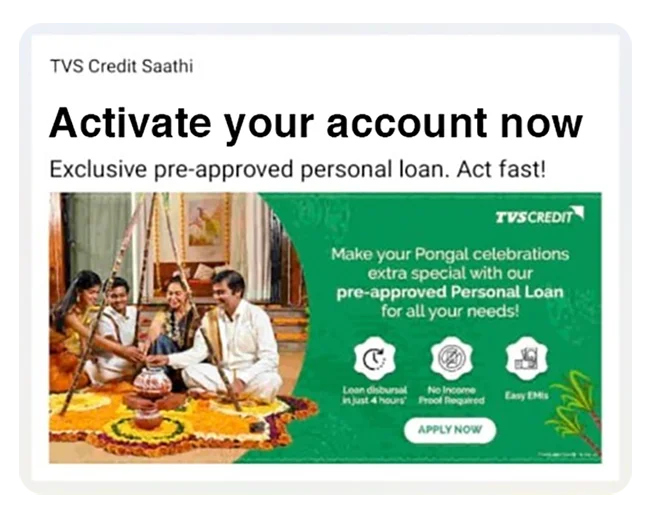
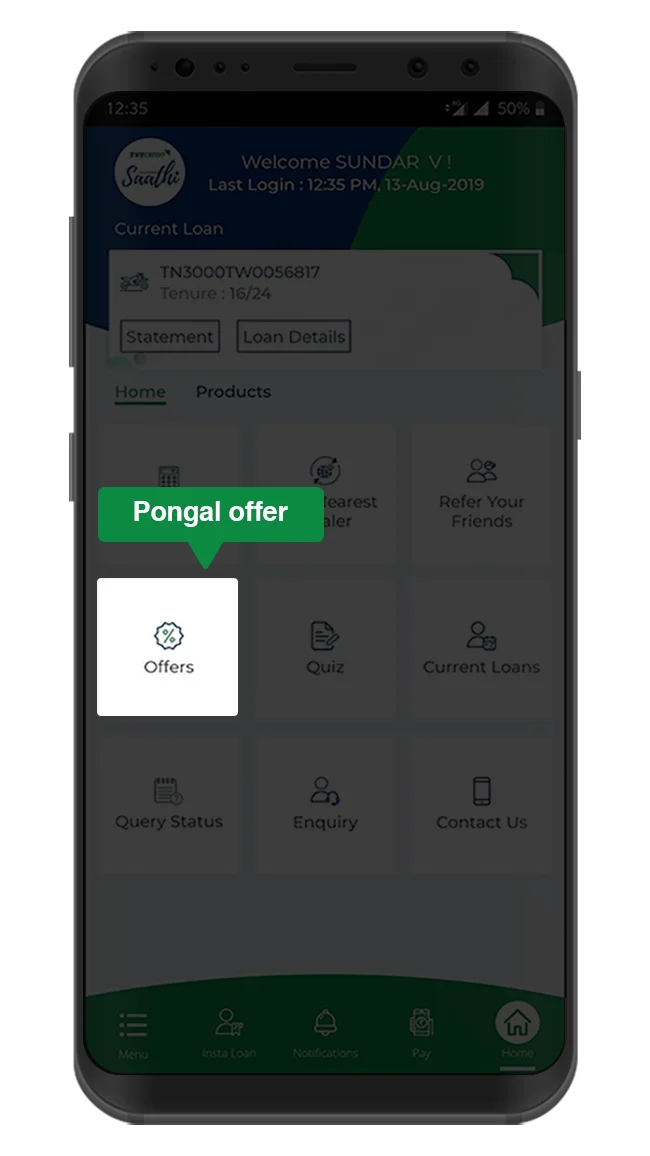
Create and deploy stunning app push notifications in minutes with Netcore’s no-code platform.
3. Guide Them to Their First Purchase With Push Notifications or Nudges
There are numerous occasions when customers add products to the cart but exit without checking out and purchasing. On your brand’s mobile app, showing a notification can have higher visibility than a web notification.
According to research, 63% of retailers could not bring cart abandonment rates below 60% before personalization. Ensuring your messages are contextual and relevant to your customers is paramount to maximizing conversions.
Pro tip: Add incentives in your cart abandonment messages like discounts or free shipping to entice users to complete transactions faster.
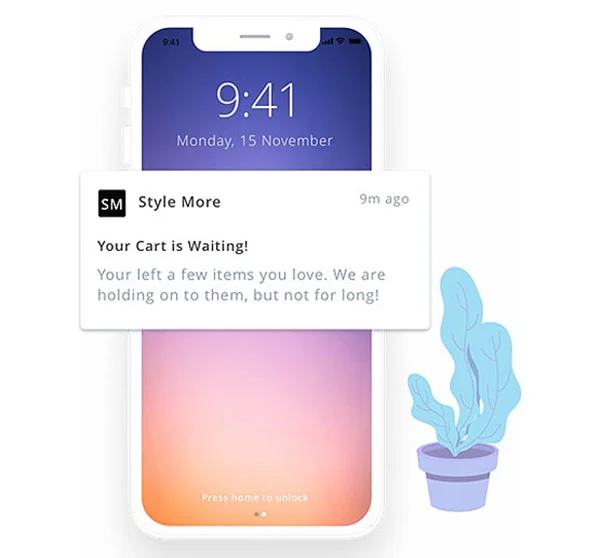
4. Upsell and Cross-sell
Upselling is the practice of offering a consumer a more profitable or luxurious version of a product they are viewing or thinking of purchasing. By understanding the psychology of customers and learning the best ways to upsell, brands can make the most of this strategy and increase the average order value and revenue per user.

It is important to up-sell in a very subtle manner. Maybelline does this by showcasing the value and benefits of similar products and recommending higher-end versions of the product.
Mac cross-sells by showing that can work well with a product the customer is buying.
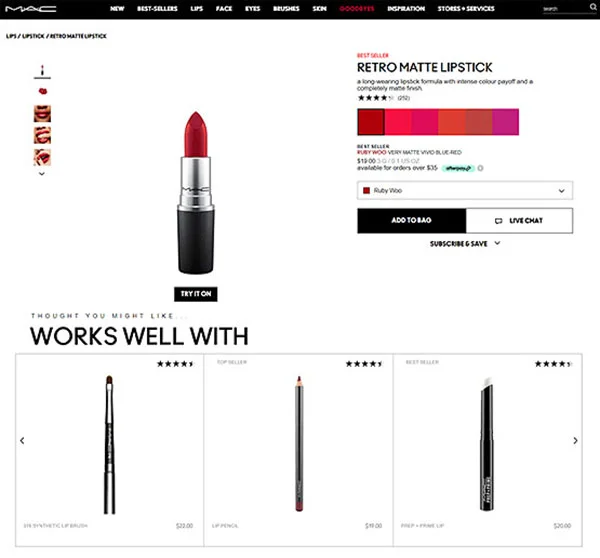
5. Get Feedback on Purchases
Post-purchase feedback is an important digital engagement examples to understand the customer experience. It can be a simple WhatsApp response. Or a larger NPS survey in the whole experience of purchasing, store selection, all to know if the customer is satisfied and would repurchase.
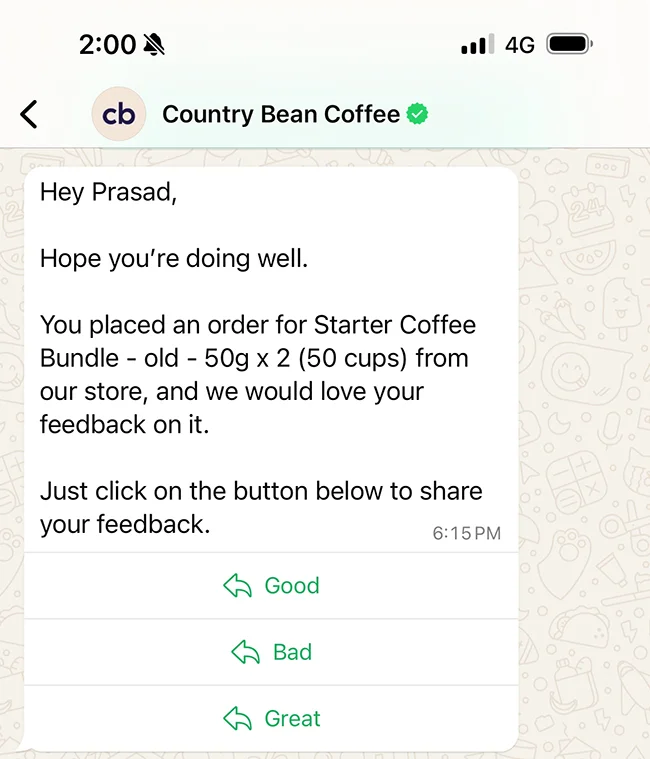
6. Gamify the Customer Experience
Gamifying the customer experience makes it interesting for them to engage more with your app. Not only do they get to play games, but they also get rewarded with offers and discounts for participating. Games like Super Mario (given below), spin the wheel, and Casino Lottery are common digital engagement examples that provide a gamified experience in the entire shopping experience.
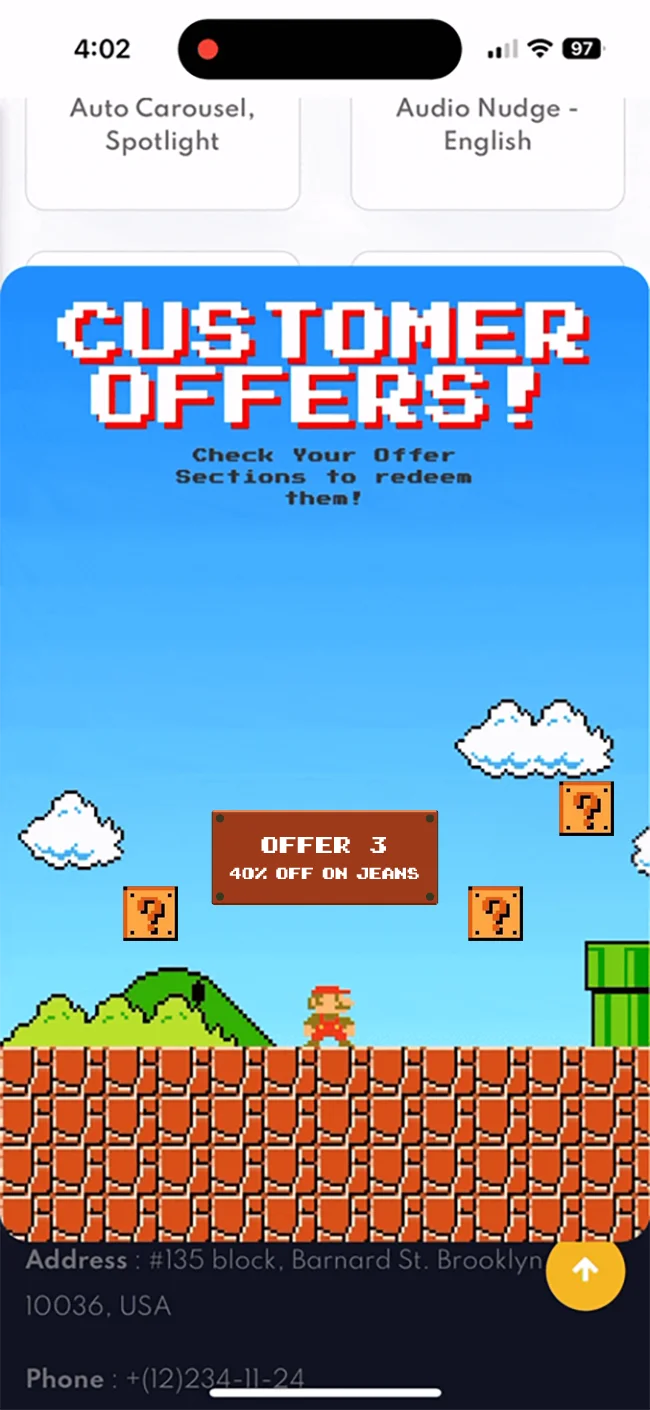
7. American Eagle: Omnichannel Engagement
Engaging on one channel or multiple channels at once has its limitations. A multichannel approach is disconnecting different channels, while an omnichannel approach is connecting different channels to achieve a specific goal.
Here we see an example of a brand showing a web push notification, then following up with email then on WhatsApp to get the user to complete a purchase.
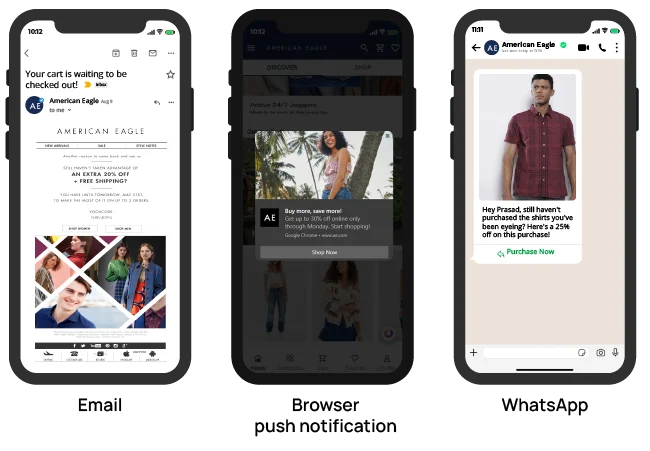
Download: The State of Multi-Channel Marketing – Marketing channels that are important for driving business growth in the future
8. Omnichannel Recommendations
Omnichannel recommendations take the above a step further with personalized recommendations across channels. Imagine your customers purchasing from your stores and getting relevant recommendations on push notifications, emails, and WhatsApp. Customers are more likely to view and purchase when the recommendations are personalized and omnichannel.
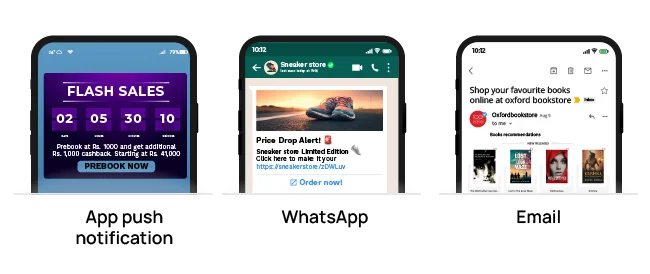
Effortlessly manage all channels in one place with Netcore’s omnichannel customer engagement platform.
9. Reactivate Dormant Customers With RCS
Sometimes, even after omnichannel engagement, users don’t come back. RCS is a perfect new channel for situations like this. It’s a much better version of SMS, where you can send rich media and personalized offers to customers.
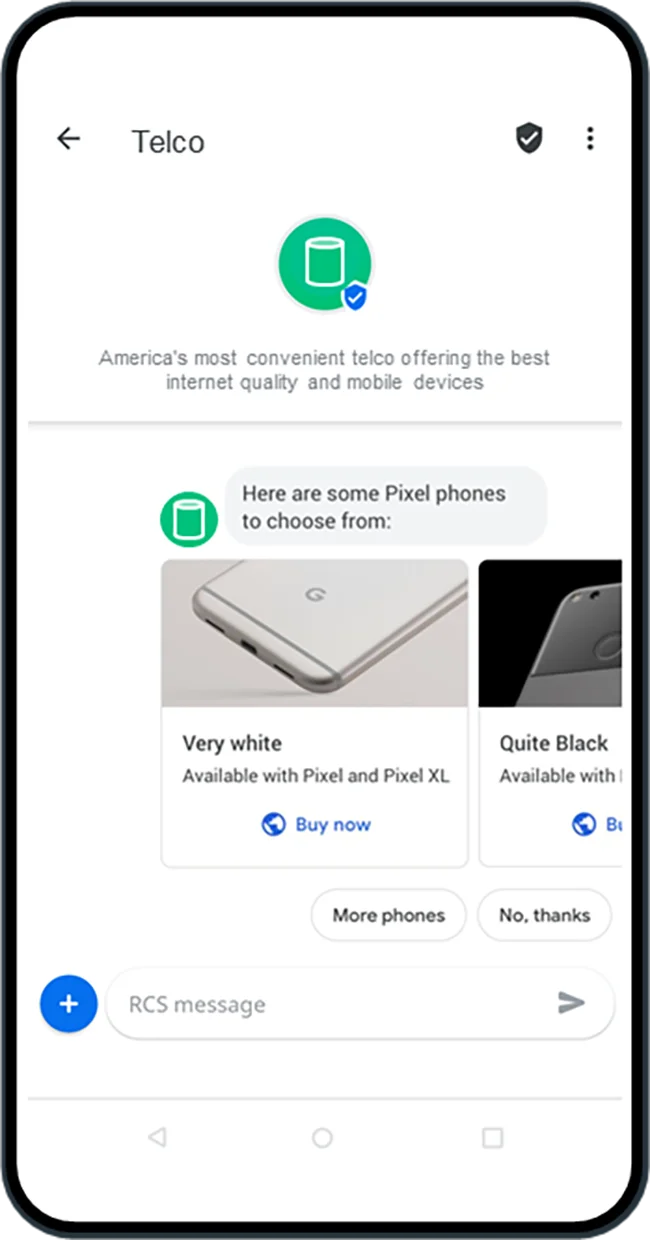
Reactivation can also be done with app push notifications as seen below in a Swiggy push notification.
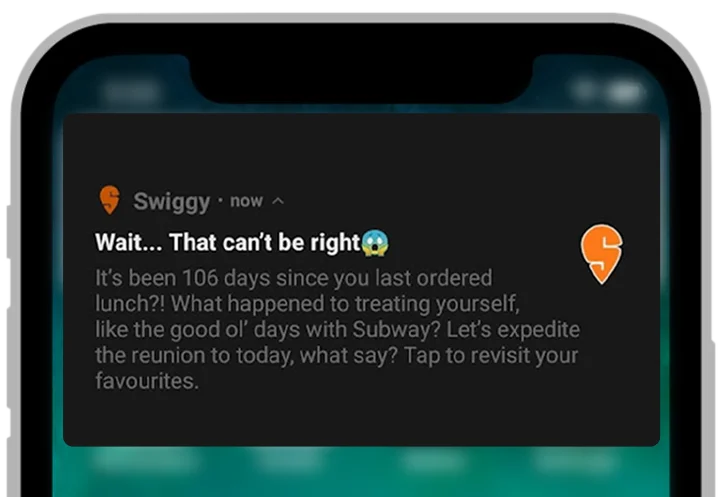
10. Reactivate Churned Customers with WhatsApp
But what if some of your customer segments are not just dormant but have churned? No repeat purchases in a long time or even uninstalled your app.
Here, you want to use a channel with a high reach, like WhatsApp marketing, to maximize your chances of bringing them back.
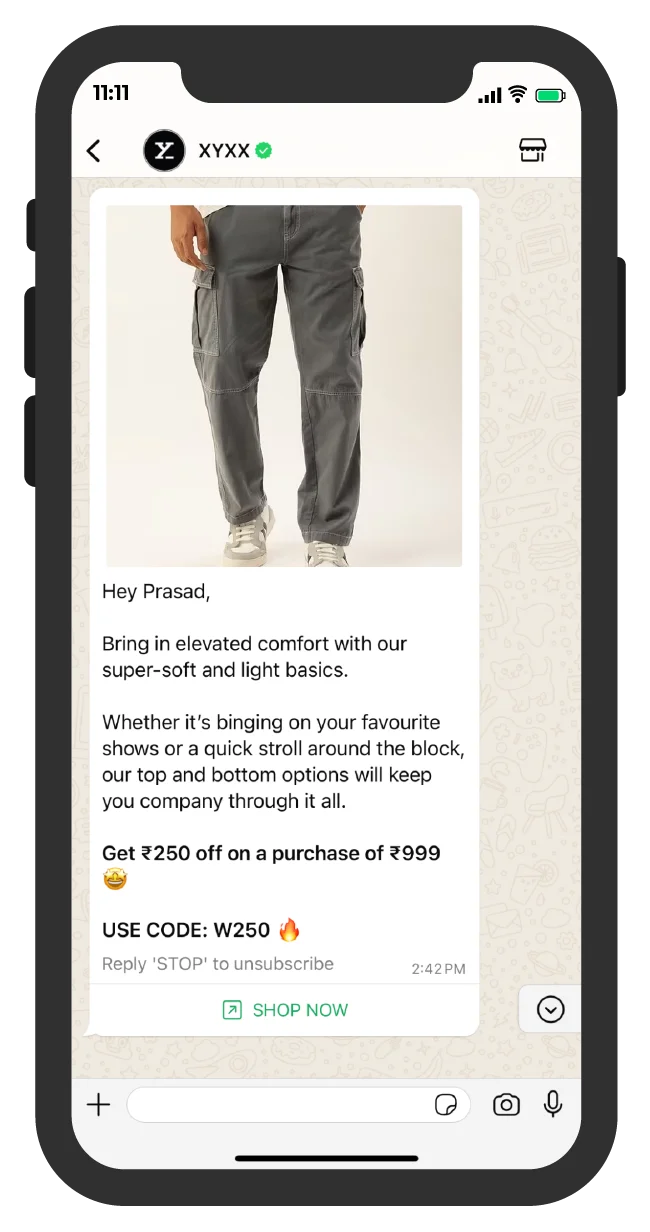
11. Predict Churn and Engage with Personalized Cart Abandonment Messages
You can go one step back and address churn before it happens with AI tools. Netcore’s AI predicts which customers are likely to churn or uninstall your app in the coming weeks.
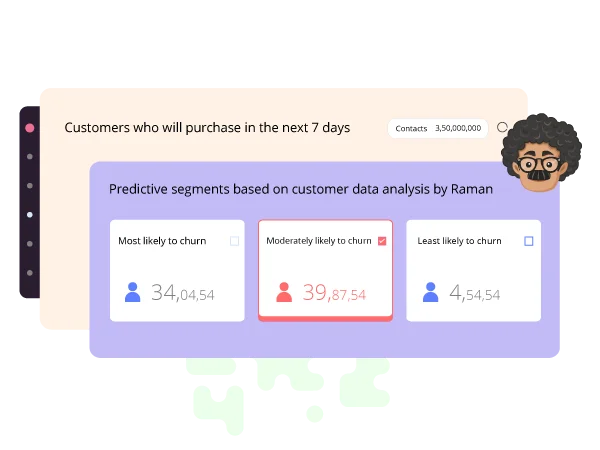
Once you have these predicted segments from AI, run campaigns on them to arrest churn before it happens.
For example, recommend a single product with free shipping to warm the customer to your brand again.
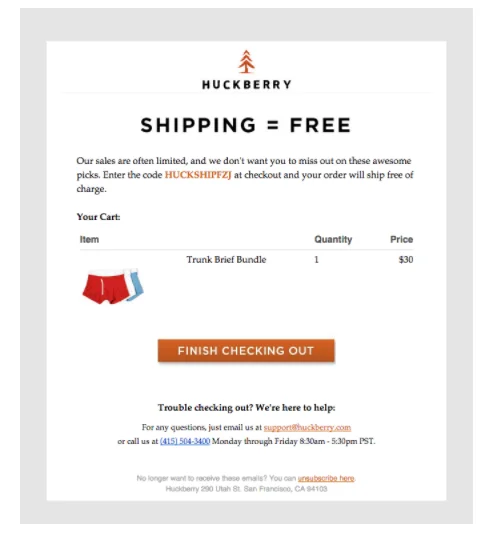
Bonus: 12. Unexpected Customer Delight
Everyone likes being surprised, and Myntra nails this with a delightful offer on an anniversary. But this isn’t an anniversary in the customer’s life but the first year since they placed an order with Myntra.
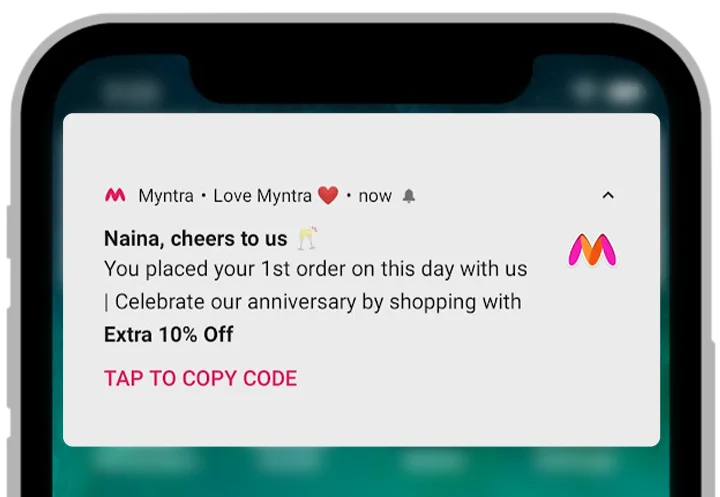
Different Methods to Drive Customer Engagement
Customer engagement isn’t about having more touchpoints—it’s about making every touchpoint matter.
In a world where attention is the most scarce currency, marketers need more than cookie-cutter email blasts or generic loyalty programs. You need intentional, meaningful, and context-aware interactions that create momentum across the entire customer journey.
Below, we break down nine engagement strategies that—when timed right—do more than generate clicks. They build trust, deepen relationships, and compound LTV.
Let’s explore what these methods are, when to use them, and why they actually work.
1. Loyalty Programs: Reward Behavior, Not Just Purchases
Most loyalty programs fail because they’re transactional: spend $100, get $1. But the best ones reward holistic engagement—referrals, reviews, social shares, app installs.
Why it works:
People want to feel valued beyond their wallet. Loyalty tiers, badges, and early access perks appeal to status psychology, not just savings.
Example:
Starbucks rewards you for ordering via the app, engaging with promotions, and visiting frequently, not just spending more.
2. Personalized Experiences: From “Hey {First Name}” to Real Relevance
True personalization isn’t using a name token in an email—it’s contextualizing the experience based on real behavior and preferences.
How to do it well:
- Recommend products based on browsing, not just past purchases
- Adjust homepage content based on referral source (e.g., email vs ad)
- Use geolocation to localize CTAs and promotions
Why it works:
Consumers are more likely to engage with content that reflects their real-time intent and emotional state. This improves relevance → retention → revenue.
3. Proactive Support: Solve Problems Before They Escalate
Most brands wait for users to submit tickets. Great ones intervene before the problem becomes visible.
How to implement:
- Use behavioral triggers to detect friction (e.g., rage clicks, inactivity)
- Send guided support when a user fails to complete a workflow
- Automate nudges when users look confused or stuck on mobile
Why it works:
Being helpful before being asked earns long-term trust and reduces churn.
4. Social Media Interactions: Move Beyond Broadcasts
The best brands use social media as a two-way channel, not a megaphone.
Engagement tactics:
- Respond to comments and DMs like a human, not a bot
- Feature user-generated content to amplify fans
- Join trending conversations in your niche (with value, not vanity)
Why it works:
Social interaction creates shared identity. When a customer tags you, shares your post, or gets a reply, they start to feel like part of your tribe.
5. Welcome Messages: First Impressions Shape Lifetime Value
Don’t just say “Welcome”—demonstrate value fast.
Make your welcome matter:
- Introduce benefits clearly (“What you can do next”)
- Offer a one-click CTA (onboarding video, personalization quiz)
- Reinforce value (e.g., “You’re joining 10,000+ [relevant users]”)
Why it works:
You never get a second chance to make a first impression. The welcome message sets the tone for activation and retention.
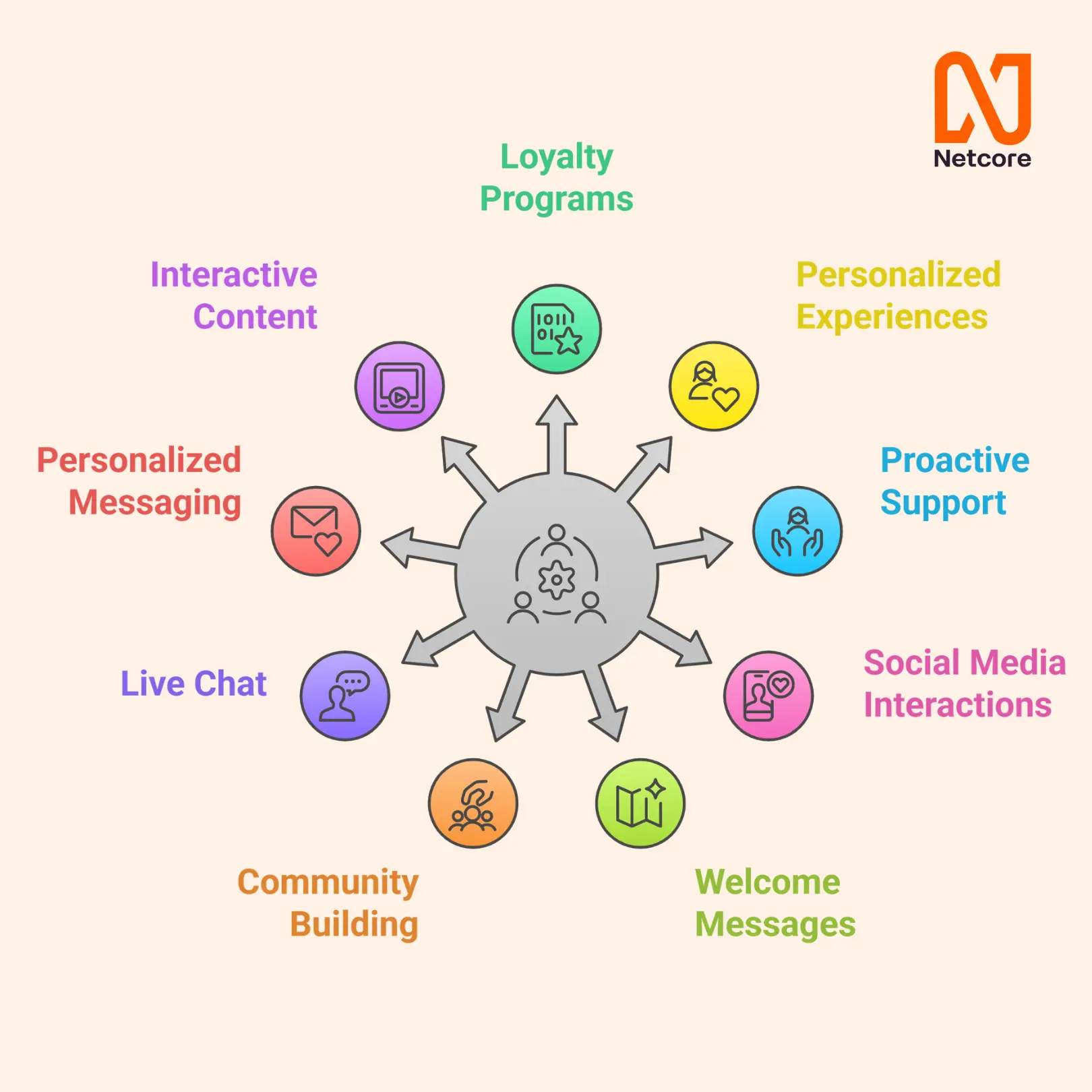
6. Community Building: Customers That Stay, Share, and Shape
Community isn’t a Slack group or forum—it’s a shared space where customers contribute, learn, and feel heard.
Ways to build community:
- Invite power users to beta groups or ambassador programs
- Highlight customer stories on your blog or newsletter
- Host niche events (virtual or IRL) for connection and co-creation
Why it works:
Communities create belonging—a driver of emotional loyalty that no discount can replicate.
Here’s an example:
“Achieved $2.5 million in sales with no paid advertising – I did it with the power of community building. Our approach to email and SMS marketing is built on the philosophy of an ongoing, friendly conversation. We leverage segmentation and predictive analytics to understand our customers’ interests, location, and buying habits, ensuring that every message sent is relevant and genuinely recommended, just like a trusted friend.” — u/brandstrategist93 on Reddit
7. Live Chat: Real-Time Help = Real-Time Conversions
Live chat isn’t just for support—it’s a conversion tool when used proactively.
Proactive live chat examples:
- Offer assistance when someone lingers on pricing page
- Surface FAQs when a user returns to the same feature
- Use “Did you find what you’re looking for?” prompts during checkout
Why it works:
It reduces purchase hesitation at critical moments, helping convert on-the-fence customers without being pushy.
8. Personalized Messaging: Right Message. Right Time. Right Person.
Mass messaging dilutes impact. Predictive personalization delivers message-channel-time precision.
What to personalize:
- Send-time optimization (based on past open behavior)
- Offers based on discount affinity or price sensitivity
- Channel of delivery (push vs WhatsApp vs email)
Why it works:
People are more responsive when you meet them on their terms, not yours.
9. Interactive Content: Engagement That Feels Like Play
Static pages are forgettable. Interactive content sticks.
Examples:
- Product finders or gifting quizzes
- ROI calculators or style matchers
- Swipe polls or shoppable stories
Why it works:
Interactive content isn’t just engaging—it gathers zero-party data you can use for deeper personalization down the funnel.
Engagement Isn’t a Tactic—It’s a System
Customer engagement isn’t a one-and-done strategy. It’s the ongoing system that powers sustainable retention, referrals, and revenue.
You don’t need to use all nine methods at once—but start where the friction is highest and the payoff is clear. Track the impact. Learn what resonates. And expand from there.
Tips for Implementing Customer Engagement Strategies
You have your segments, channels, campaigns, and content. Here are a few tips to keep in mind when implementing these customer engagement marketing strategies.
Know Your Customers
- Mapping their usual points of contact with your business will help you understand their journey. From first cognizance to acquisition and beyond. This makes engagement more customized at every level.
- Gather feedback: Actively ask for customer feedback through surveys, reviews, and social media interactions. Use this to understand their needs and, more importantly, preferences and consent for which channels they’re open to receiving communications.
Be relevant:
- Segment your audience based on attributes and behavior. This allows for finer targeting with relevant communications.
- Use customer data to personalize your communication, product recommendations, and offers. Or use an AI tool like ours.
Focus on Communication:
- Omnichannel approach: Be present on the channels your customers use most, like email, social media, and messaging apps. Identify this with Netcore’s Preferred Channel.
- Content is king: Create valuable and informative content that educates, entertains, and keeps customers engaged with your brand.
- Experiment and test: Don’t be afraid to experiment with different engagement strategies. A/B test different approaches to see what resonates best with your audience and scale what works.
Conclusion
Customer engagement goes way beyond firing off emails or WhatsApp messages—it’s about genuinely connecting with your customers, and making sure they feel heard and valued. All the best customer engagement examples we’ve covered can be effectively implemented using our all-in-one customer engagement platform.
By leveraging these strategies, you’re not just meeting needs, but also nurturing a loyal customer base that fuels long-term growth and success. So, start building bridges with your audience. Watch your customer engagement soar as you tap into the powerful tools provided by our platform. Want to see how Netcore can transform your customer engagement efforts? Book a demo today.
 2 YRS IN A ROW
2 YRS IN A ROW  Netcore Named a Leader in 2025 Gartner® Magic Quadrant™ for Search & Product Discovery
Netcore Named a Leader in 2025 Gartner® Magic Quadrant™ for Search & Product Discovery 







